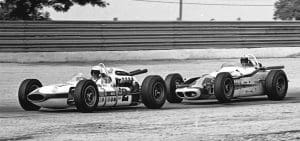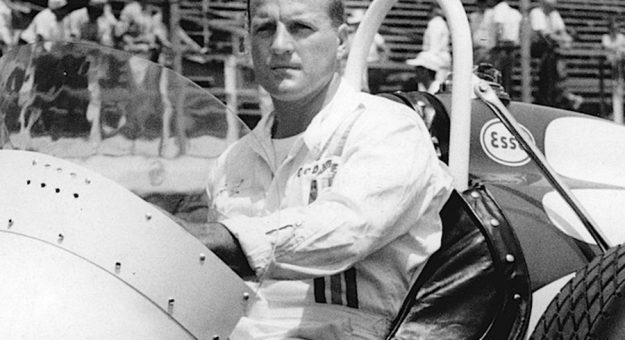“Second place means nothing. It’s the first of the losers.” Few have exemplified that racing adage like A.J. Foyt.
His résumé of racing accomplishments is unparalleled. He’s won throughout the United States and around the world in a myriad of racing disciplines. During a five-decade career, Foyt amassed seven major championships and hundreds of victories.
Foyt once said of his ability to come out on top: “If you want to win you’ve got to work at it. It’s not easy. You’re going to have to give that extra effort to win. I know some great race drivers who were always satisfied with second or third when they could’ve won. They did not want to put in that extra little effort. They were satisfied. I never was. I only thought about winning.”
Foyt fulfilled that personal expectation during the 1964 USAC Championship season. That year he won 10 champ car races, including the first seven. Six years later, Al Unser matched that feat while taking his first national championship in 1970. However, Unser needed 18 races to get his 10 wins. Foyt put his string together in only 13 events.

There were 2,050 laps raced during the 1964 USAC Championship schedule. Foyt led 861 of them and won every race he finished.
The new, paved track in Phoenix opened the ’64 season with a 100 miler. Foyt shared the front row with polesitter Parnelli Jones. He grabbed the lead going into turn one and led all 100 laps.
Trenton was the next race on the USAC Championship schedule. Foyt improved his Phoenix performance by earning the pole and leading all 100 laps. Only second-place Jim Hurtubise and Roger McCluskey finished on the same lap with him.
Foyt dominated the first two races of the season in his faithful Watson/Offy roadster. However, as the Indianapolis Motor Speedway opened for practice on May 1, few believed he could duplicate that performance in the 500.
The rear engine-cars were coming into their own, outclassing the front-engine dinosaurs like Foyt’s.
Despite the fact the front row, for the first time in speedway history, was comprised solely of all rear-engine cars, when the dust settled on the 48th running of the 500, Foyt was in victory lane for the second time.
The weekend after Indy, the Rex Mays classic ran at The Milwaukee Mile. Rodger Ward outqualified Foyt for the top spot, but after a thrilling battle with Ward and Hurtubise, Foyt lapped the field to take his fourth consecutive victory.
On June 21, the schedule switched from paved tracks to dirt at infamous Langhorne (Pa.) Speedway, but that didn’t slow Foyt’s onslaught one iota. From second starting spot, he grabbed the lead on the first lap and led the rest of the way.
There were four more dirt track races that season. Driving his Wally Meskowski-built dirt car, Foyt won all of them, including the prestigious Hoosier Hundred.
The dirt mile at the Illinois State Fairgrounds in Springfield, however, was nearly his undoing.
“I drew a bad number for qualifying and damn near missed the show because they only started 18 cars,” recalled Foyt later. “I was buried back there, but I didn’t stay there long.”
Foyt was always a traditionalist, but he was also a racer. He understood to remain competitive he would have to make the transition to rear-engine cars. He initiated that process when the series retuned to Milwaukee in August. He qualified his Lotus/Ford third, but lasted only one lap. His consecutive win streak ended, he exclaimed afterward, “The transmission broke in the damn thing.”
The final race of the season at Phoenix did little to endear Foyt to the new technology. His rear-engine Halibrand lasted longer than at Milwaukee, but again he fell out early and finished 19th.
Despite his poor Phoenix finish, Foyt easily claimed his fourth USAC National Championship in five years. He also found time in 1964 to win five USAC sprint car features, three USAC stock car shows and NASCAR’s Firecracker 400 at Daytona Int’l Speedway.
“It was all right,” remarked Foyt to Robin Miller about his milestone year. “Obviously, it was an unbelievable year. George (Bignotti, his iconic chief mechanic) and I really were on top of things and, to be quite truthful, it was the most enjoyable year for me because you still had to run the dirt and pavement to win the championship. And we had something for those funny cars.”
This story appeared in the Nov 29, 2023 edition of the SPEED SPORT Insider.

